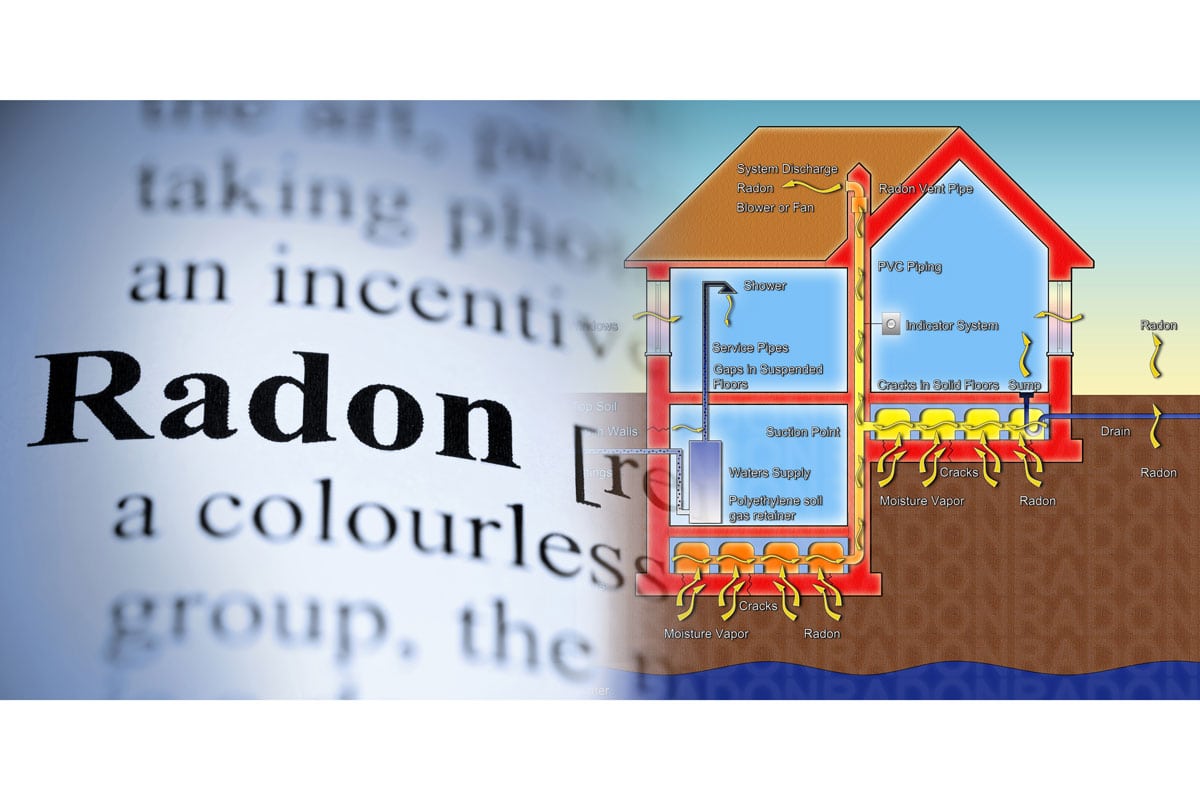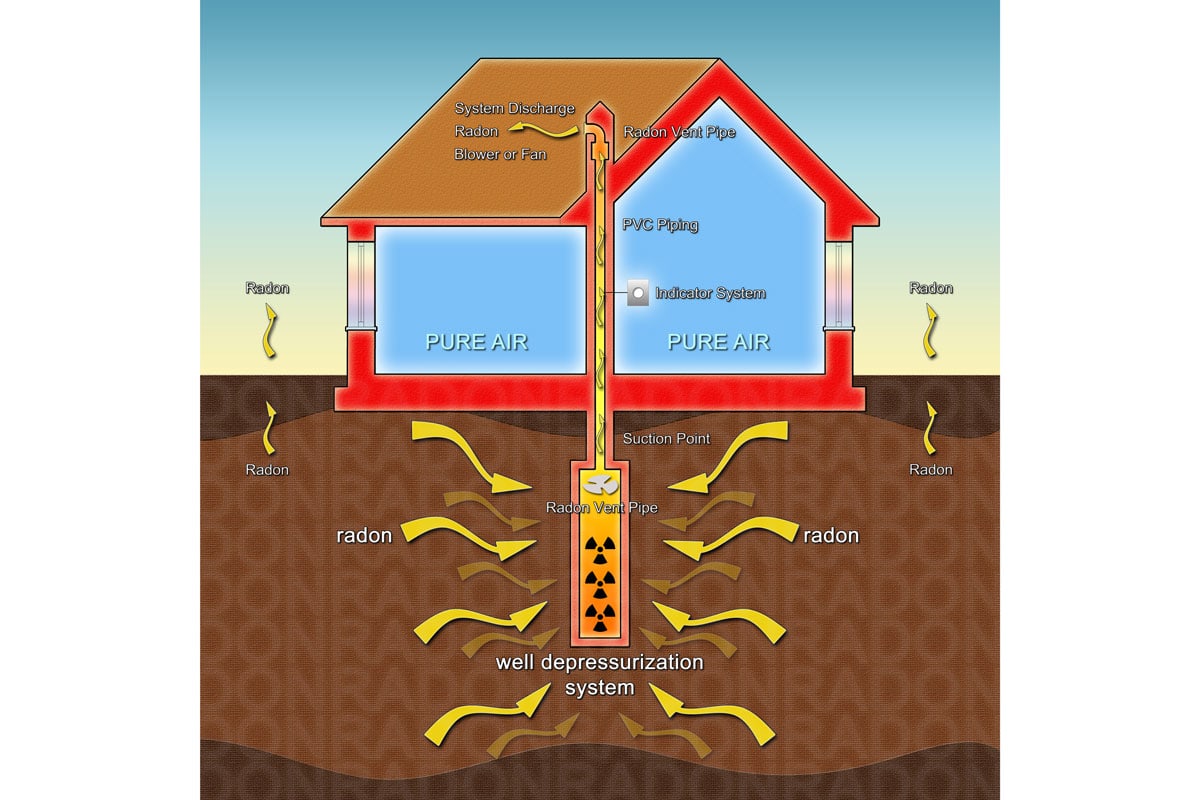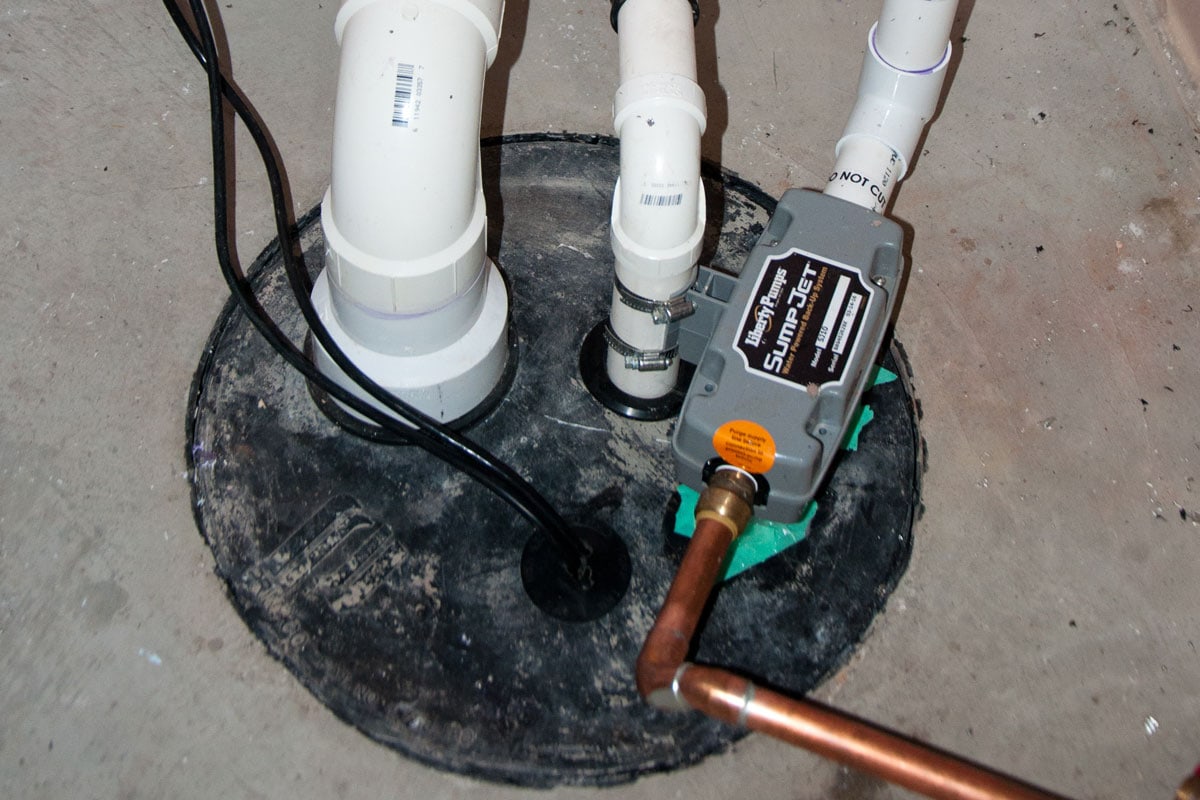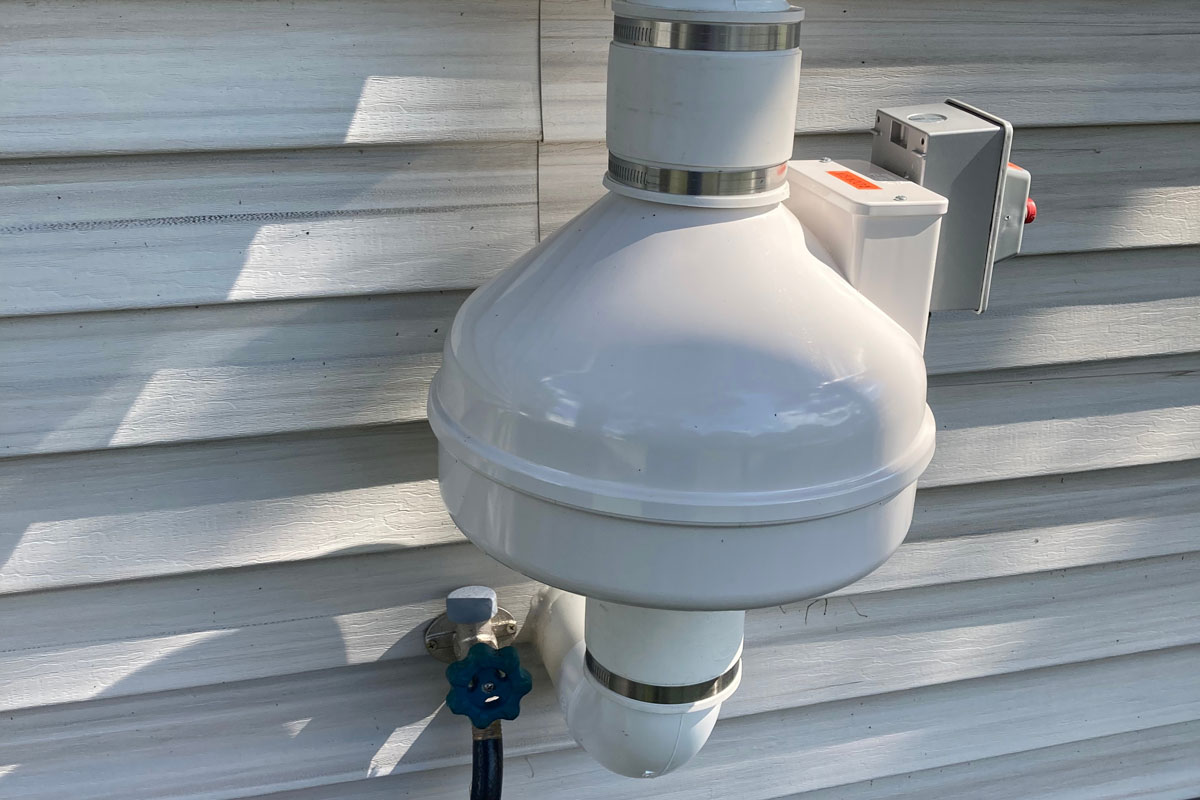Radon is a radioactive gas from soil that threatens your family's health and can cause lung cancer next to smoking. If you're not sure what size and how many radon fans you need at home to make your family safe, you're in the right place. We did thorough research and will provide more details about radon fans in this post.
Radon fan sizing is difficult to measure. The size of the radon fan will vary according to your home's radon levels testing results after inspection. Getting the accurate size of your radon fan depends on the condition of the soil beneath your home. It needs pressure field extension, which means how far a radioactive air under your home should be drawn.
When a radon mitigation system is installed in your house, it only has one fan component. It doesn't require many radon fans. The size of it will vary depending on the result of inspections to effectively exhaust radon gas outside your home.
Let's learn more about radon fans and other related topics that will give you insight into how it can help you and your family's safety from this hazardous radon gas. Keep reading!

What Size Of Radon Fans Do I Need?
Getting the right size of radon fan can be difficult. It's hard to estimate it on your own as it needs thorough inspections. There are no exact guidelines for getting your radon fan size. Although manufacturers have fan size charts, it only helps after trying out other types.
The size of your radon fans will depend on the soil conditions, sub-slab fill, suction pit sizing, and factors such as the following:
- Measurement of your building or home's size footprint in square footage.
- Test the current radon level, which should be tested for the long term.
- Mixed sizes of the building type in the square foot, including the slab grade, basement, garden level, walkout, and crawl space. Also, the soil type under your home.
- What will be the exact location of your fan? Indoor or outdoor?
It's best to get the size accordingly, the suction required versus the airflow available. The right size of the fan will also minimize your electric bill.

DIY Radon Fan Sizing Tips
Check out this portable radon detector on Amazon.
You can try measuring the size of the radon fan you need by yourself. But you have to purchase a radon diagnostic kit and a manometer to do it. You need to dig below your basement to the soil to measure the airflow and how long pipes you need. Also, measure the pressure field extension to find out how far suction is required by the radon system that your home needs.
As for the radon mitigating system installment, you can watch this video guide if you prefer to do DIY:
The installation time will run up to 6-10 hours, depending on the running vent pipe complexity from the basement to the roof.
For safety and less hassle, this work should be done by a professional and licensed radon mitigating contractor as it needs in-depth knowledge and plumbing skills in several areas such as electrical to roofing.
Radon fan sizing will depend more on the condition of the soil under your home if it's clay, sand, or gravel, and less on size.
How Many Radon Fans Do I Need?
A radon mitigation component only uses a fan to pull the air from the soil continuously. It releases radon gas outdoors via pipes at the roof's edge. When radon mitigation is installed in your house, the radon fan should be in an unconditioned space. A radon mitigation system has only one fan component.
Thus, you only need one radon fan in one radon mitigation system. If your building site is huge, add another radon mitigator on the opposite side to ensure the radon level remains low. The size will vary and will be determined after a thorough inspection by your contractor.

Types Of Radon Fans
There are three types of radon fans that you can choose from:
Low-Suction with Low Airflow
Low-suction radon fans are used if there are drain tiles or 4" to 6" of gravel below your property. When a new home is built, it is also added to a passive radon reduction system installation. It is less expensive to operate and costs only $20 to $30 for electricity per year.
Check this RN1 radon fan on Amazon.
Moderate Suction with moderate to high airflow
Read through this related article: Reduce Radon Fan Noise – How To Soundproof A Noisy Fan
It usually consumes electricity ranging from $55 to $140 per year.
Check this RP145c radon fan on Amazon.
High-Suction with low airflow
High-suction fans are best if your house has tight soils like clay or sand. Houses with tight soil below may need more than one suction point to produce a vacuum for the whole building. It is better to use this type to avoid other suction installations.
However, high suction is noisy, so you may need a noise suppressor just like the moderate suction fans.
It consumes $100 to $150 in electricity per year.
Check this GP501 radon fan on Amazon.
Where Is The Best Spot For Radon Fan?

The exact location of radon fan placement is significant. If your home radon level is 4pCi/L after diagnosis, installing a radon mitigation system is needed for your family's safety. The radon fan must be outside your living space at your home.
For more details, read this other post: Can A Radon Fan Be Inside My Home?
It should also be outside air-conditioned places, so the best spot would be in an attic and a garage or outside the house. Basements and crawlspaces are not allowed. The fan should not be below a livable space and plug into an electrical junction box or hard wire. The radon device will give a warning alert if it is not working correctly.
Radon gas is odorless and can't be recognized unless you do another test. The radon fans should be placed in the right place to avoid radon leaking, which will cause an increase in your radon level even before the radon mitigation system is installed.
Should Radon Fans Run Continuously?

The radon fan is the backbone and the heart of the radon mitigation system. It should never be switched off and should continuously run in your home to ensure the system works properly and for your home's safety.
Turning off the radon fan will cause the radon level to revert to the pre-mitigation levels a few hours later. It will also cause a pre-mature failure when the ground moisture enters the bearings and motor. Therefore it's best to keep it running.
What is The Life Expectancy Of a Radon Fan?
A radon mitigation system is similar to a furnace or chimney that needs upkeeping and maintenance. It is continuously running in your home, checking it is a must. Usually, a radon fan lasts up to 5 years or more.
Radon mitigation system needs proper maintenance since it runs continuously, but most manufacturers have a warranty that will cover repairs and replacements for up to 5 years.
Final Thoughts

Radon gas is hazardous to your family's health. Knowing what size and how many radon fans your home needs can ensure your family's safety. The right size of radon fan will effectively exhaust the radon gas away from your home and minimize your electric bills.
It is important to note that the bigger size won't necessarily mean the better. The radon fan sizes will vary depending on your radon levels test results and the soil condition of your home. Also, the type of radon fan you use and the exact location of your radon mitigation system will ensure the radon levels will be at the lowest.
Calling a professional licensed radon mitigation contractor is highly recommended to ensure your home is safe from radon gas invasion.
Made it here? Check out these related articles!




